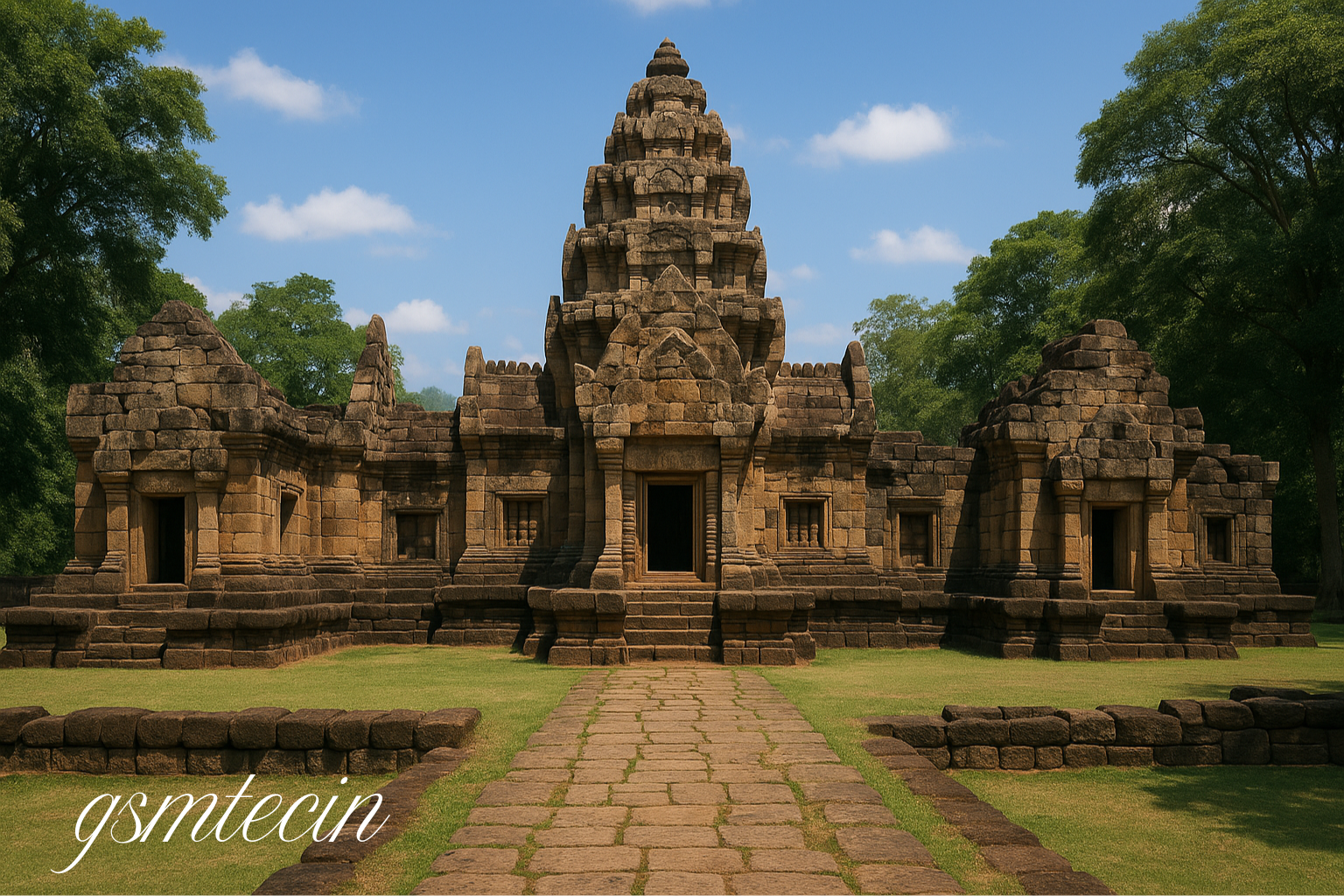Prasat Ta Muen Thom: A Hallowed Temple at the Centre of an Inter-Border Struggle
The Dangrek Mountains are home to the 11th-century Hindu temple known as Prasat Ta Muen Thom, which is situated across the disputed border between the provinces of Surin, Thailand, and Oddar Meanchey, Cambodia. Constructed under the rule of King Udayadityavarman II of Cambodia, the temple honouring Lord Shiva is one of three ancient Khmer religious buildings, along with Prasat Ta Muen and Prasat Ta Muen Tot. Because of their religious, architectural, and geopolitical significance, these temples have historical significance.
Meaning in Religion and Architecture
The Prasat Ta Muen Thom complex was a crucial rest point on the ancient roadway that connected Phimai, Thailand, with Angkor, Cambodia, as well as a religious site. Built with sandstone and laterite, it is a prime example of Khmer architecture, featuring two side libraries, a central sanctuary with a Shiva lingam, gopuras (entrance towers), and a sacred spring. A huge laterite staircase that leads into Cambodian land and the site’s south-facing orientation, which is uncommon for Khmer temples, make it unique.
With later Buddhist influences by King Jayavarman VII, who transformed portions of the complex into Mahayana Buddhist facilities, the temple has strong spiritual foundations in Hindu Shaivism. Prasat Ta Muen Tot functioned as a hospital shrine, complete with Sanskrit inscriptions honouring Bodhisattva deities and detailing administrative tasks, while Prasat Ta Muen itself became a dharamshala (traveler’s rest house).
Historical Background and Colonial Heritage
Treaties signed between France and Siam (Thailand) during the colonial era in the late 19th and early 20th centuries are the origins of the current disagreement. Although access is mostly via Thailand, Prasat Ta Muen Thom was shown on French maps as being in Cambodian territory. Similar to the 1962 International Court of Justice (ICJ) decision in favour of Cambodia in the Preah Vihear Temple dispute, these ambiguous, topography-ignoring colonial maps have resulted in long-term boundary confusion. Prasat Ta Muen Thom, however, has not experienced any such legal arbitration.
Tensions in Geopolitics
Tensions between nationalists and the military have centred on the temple complex. During the 2008–2011 Preah Vihear Temple dispute, skirmishes occurred close to the location. After Thailand accused Cambodia of deploying surveillance drones into the temple area in 2025, tensions erupted once more. This led to fatal battles, including airstrikes with F-16 jets and rocket attacks. Both countries have reduced diplomatic ties, and at least 12 people have been confirmed dead.
The temple is seen as an integral aspect of the national identity of both Thailand and Cambodia. Thailand claims administrative sovereignty and improved site accessibility, while Cambodia highlights its Khmer heritage. Despite pleas for a peaceful conclusion, checkpoints, fences, and troop deployments are nevertheless frequently seen around the site.
Problems with Preservation
Prasat Ta Muen Thom has little tourism because of its delicate border location. Military clearance is required for visitors, and entry from Cambodia is particularly challenging. The temple has been looted, especially during the civil war in Cambodia. Repatriation discussions have been sparked by artefacts like sculptures and lintels that have appeared in foreign markets and museums.
Cambodia has advocated for shared management and UNESCO engagement to conserve the monument and allow for peaceful tourism development, while Thailand has made some conservation and restoration efforts. However, cooperative preservation is challenging because to continuous military tensions.
Legacy of Culture and Art
The temples are a reflection of how religious missions and maritime trade brought Indian culture to Southeast Asia. The art and Sanskrit inscriptions of the temple show how the Khmer Empire incorporated elements of Shaivism and Vaishnavism from the Pallava dynasty in South India. Khmer and Indian political-theological systems are further connected by the Devaraja (God-King) idea, which views kings as divine manifestations of gods such as Shiva.
The Shiva lingam, sacred spring, and gopuras are examples of the temples’ construction that reflects early Hindu temple design while also adding later Buddhist functional characteristics. The cultural fusion that defined the Khmer Empire at its height is exemplified by these levels of religious influence.
In conclusion
A moving representation of disputed heritage and shared history is Prasat Ta Muen Thom. A remnant of the powerful Khmer Empire, it is currently entangled in contemporary geopolitics, colonial legacies, and national pride. Through shared cultural stewardship, the temple also provides a ray of hope for reconciliation in the face of diplomatic and military difficulties.
The location might serve as a template for cooperative heritage management and regional collaboration if the dispute is settled amicably. It is still a flashpoint until then, revered by many but marred by controversy.




